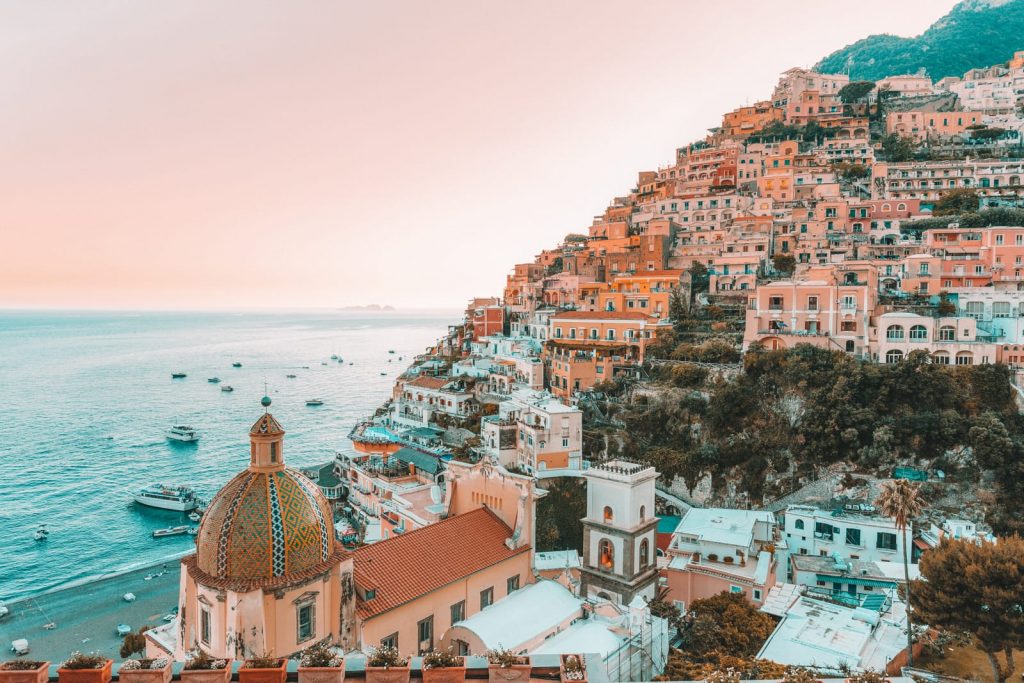
The Italian peninsula, with its characteristic boot shape, extends along a territory of 301,333 sq km, in the center of the Mediterranean Sea, with a length of 1300 km. To the north the Alps divide it from the rest of Europe, and along the Alps it borders to the west with France, to the north with Switzerland and Austria and to the east with Slovenia. The coasts extend for about 7,500 km. The peninsular section, which is entirely covered by the Apennine chain, overlooks the Ligurian Sea and the Tyrrhenian Sea to the west, the Adriatic Sea to the east and the Ionian Sea to the south and south-east, almost as far as the coast of Africa which, in the closest point, they are just 150 km away.
The territory is mainly mountainous (about 39%) and hilly (40%), only 21% is flat. From a geological point of view, Italy is a “young” country: the two aforementioned mountain systems that form its backbone, i.e. the Alps and the Apennines, originated in the tertiary era and only recently, in the Quaternary (almost two million years ago), have there been many episodes that they determined the current forms of the territory. In the Alps, Mont Blanc is the highest peak with 4810 meters of height. In the Apennines we find the Gran Sasso, with 2914 meters.
The Po Valley and the Tavoliere di Puglia extend for 3,000 km² and derive from a progressive raising of the seabed, subsequently covered by alluvial layers. Another primacy of Italy is to have three active volcanoes: Etna, Stromboli and Vesuvius (in fact Vesuvius is not extinct, but “dormant” and there is a strong fear of its sudden and violent awakening). This feature l ‘ Italy divides it with distant Iceland, which has more volcanoes, but not perennially active, such as Etna and Stromboli. The territory includes numerous islands: Sicily and Sardinia, as well as smaller islands and archipelagos such as Elba in the Tuscan archipelago, the Parthenopean islands, the Egadi, the Aeolian Islands, the Tremiti and the Pelagie.
Italy is the only state in the world to welcome, within its borders, two other sovereign states – San Marino and Vatican City – which are completely interluded, that is, they have no access to the sea. the Tremiti and the Pelagie. Italy is the only state in the world to welcome, within its borders, two other sovereign states – San Marino and Vatican City – which are completely interluded, that is, they have no access to the sea. the Tremiti and the Pelagie. Italy is the only state in the world to welcome, within its borders, two other sovereign states – San Marino and Vatican City – which are completely interluded, that is, they have no access to the sea.
The extreme point of latitude to the north corresponds to 47 ° 05 ’29, while the one to the south on the Island of Lampedusa is at 35 ° 29’24.
The mild and temperate Italian climate is certainly one of the factors that most attract millions of tourists every year. Only rarely, in fact, do you have temperatures higher than 38 ° C in summer or below 8 ° below zero in winter. The influence of the two mountain systems (Alps and Apennines) and the presence of the sea contribute to determining the climatic differences of the peninsula. In general terms, spring from March to May, and autumn from September to November, mild everywhere, are certainly the seasons that best make you appreciate the wonders of the area. In the first months of autumn there are many gastronomic and mmc 996 casino festivals dedicated to local specialties such as mushrooms, cheeses, chestnuts, and wine tastings.
